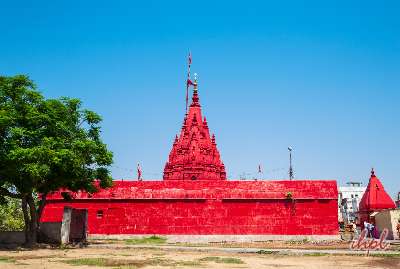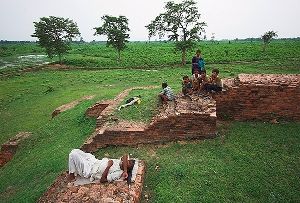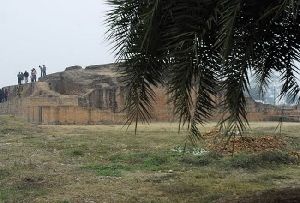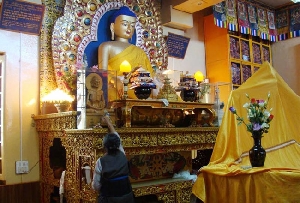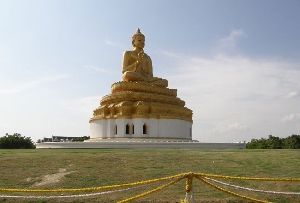The ancient city of Shravasti, a flourishing habitation that is an important landmark in the history of Buddhism and Jainism alike, is at present but a collection of ruins called Sahet-Mahet. This twin name has been given to two distinct groups of remains, Sahet and Mahet. Sahet is the site of the famous Buddhist monastery known as Jetvahana Vihar, which lay outside the limits of the Shravasti city proper. Mahet on the other hand is identified with the city of Shravasti. The ruins at Sahet consist mainly of plinths and foundation of Buddhist monasteries and stupas, and Mahet, situated about 500m from Sahet denotes the ancient city proper. Both Sahet and Mahet are now popular tourist attractions in Shravasti Uttar Pradesh.
Very little is known of the city of Shravasti until it rose to fame during the Gupta period owing to its association with Buddha and Mahavira in sixth century B.C.
At the time of Buddha, King Presanajit ruled Shravasti. The site of Sahet is said to be the recreational park of prince Jeta, son of Presanajit, after whom the Jetavan Monastery was named. Legend has it that Sudatta (also known as Ananthapindika), a wealthy merchant of Shravasti, bought this park from prince Jeta in exchange for enough gold pieces that could cover the park. The earliest structural activities at Sahet are attributed mainly to Suddatta, Prince Jeta and his father King Presanajit.
In the third rainy season after his enlightenment, Lord Buddha said to have visited Jetavana Monastery and since then he regularly made his sojourn to the monastery spending here 24 rainy seasons in all. Lord Buddha is said to have converted a notorious robber called Angulimalai into a disciple and follower of Buddhism here at Shravasti. The Tourist Attractions in Shravasti in India are steeped with values and legends of Buddhism.
After the age of Buddha and Mahavira, the history of Shravasti is obscure till we come to the period of Ashoka in the third century B.C. The material prosperity of Shravasti was at its height during Ashoka’s period who is credited with the erection of two pillars, each 21m high, in addition to the construction of several monasteries and stupas. The monasteries and shrines of Jetavana now in ruins are among the prominent tourist attractions in Shravasti Uttar Pradesh, and were renovated during the early centuries of the Christian era under the patronage of Kushana kings. During the Gupta period the Buddhist establishment at Jetavana gained more prominence. These ruins now form the centre of Tourist Attractions in Shravasti in Uttar Pradesh India.
In the early fifth century Chinese scholar, author and philosopher FA-HIEN visited Shravasti. During the reign of king Harsha (AD 606 – 647) Hiuen – Tsang another Chinese scholar traveled to Shravasti and found it a wild ruin.
The ruins of Shravasti were brought to light and identified with Shravasti by Alexander Cunninghum in 1863.





